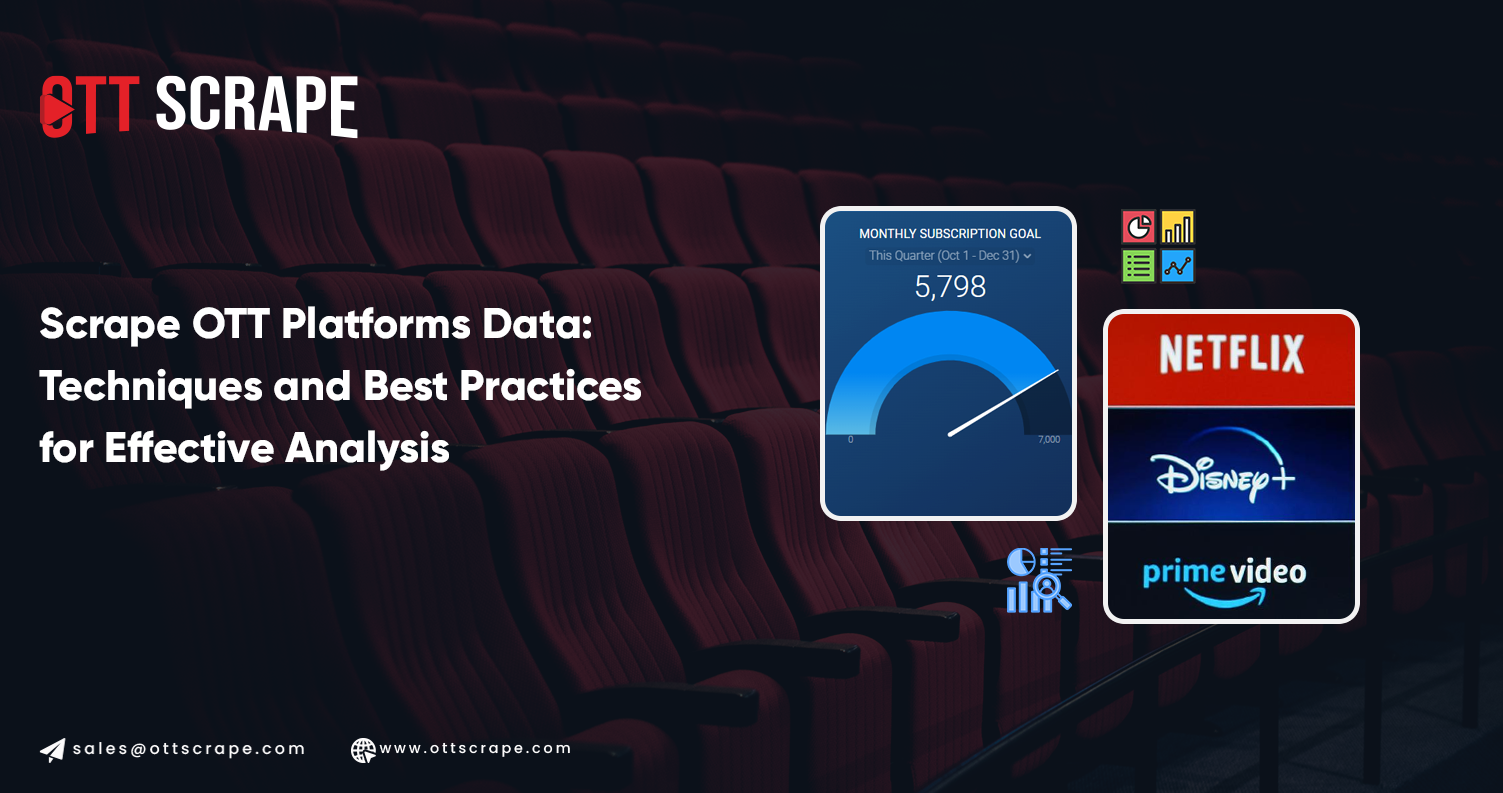
Introduction
Over-the-top (OTT) platforms have fundamentally transformed media consumption. They allow users to stream content directly over the Internet, bypassing traditional distribution channels such as cable and satellite.
As competition intensifies, scrape OTT platforms data to gather insights, enhance user experiences, and optimize their offerings.
This report delves into the various data scraping techniques applicable to OTT platforms. It highlights their significance, methodologies, tools, challenges, and best practices, particularly in the context of streaming OTT platform data.
Understanding OTT Platforms
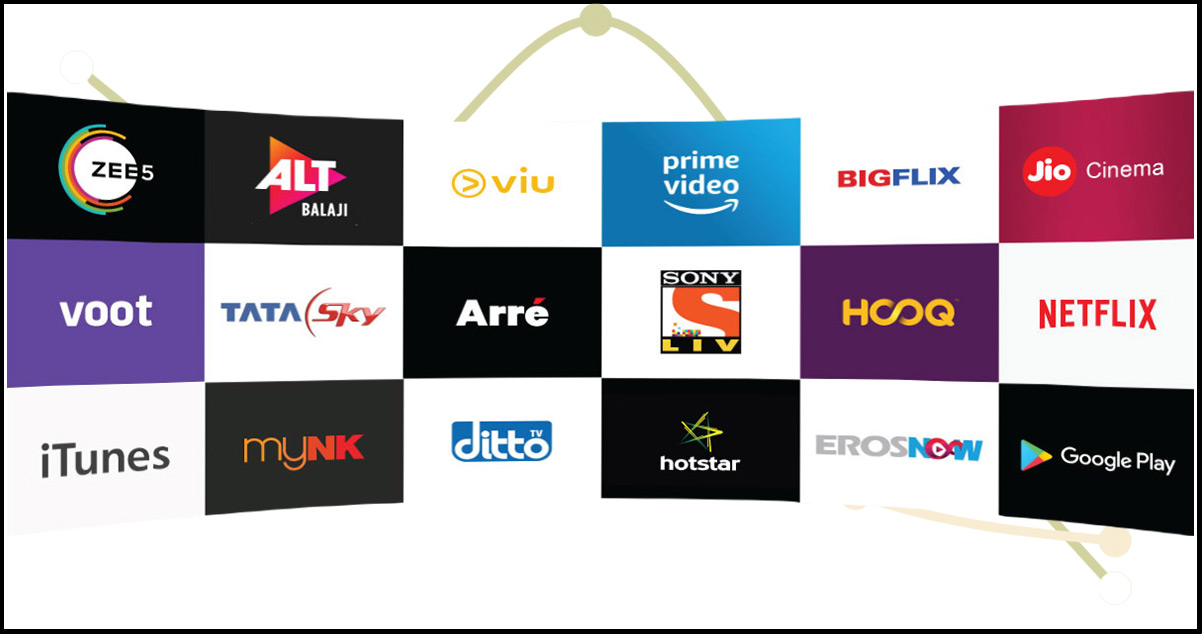
OTT refers to services that deliver online audio, video, and other media content. These services allow viewers to access programming without the need for a traditional cable or satellite subscription. Users can enjoy content on various devices, including smartphones, tablets, smart TVs, and computers, enhancing accessibility and convenience.
Evolution of OTT Services
The rise of OTT services can be traced back to the late 1990s, with the launch of platforms like Netflix. Initially a DVD rental service, Netflix transitioned to streaming in 2007, paving the way for others to follow. Today, OTT platforms have expanded rapidly, offering original content, live broadcasts, and various genres to cater to diverse audience preferences.
As the demand for diverse content increases, OTT platform data scraping has emerged as a critical tool for businesses seeking to understand viewer behavior and preferences. With the help of an OTT platform data scraper, companies can efficiently gather valuable insights that drive content strategies. Furthermore, effective OTT platform data collection methods enable platforms to optimize their offerings and improve user satisfaction.
Popular OTT Platforms and Market Share
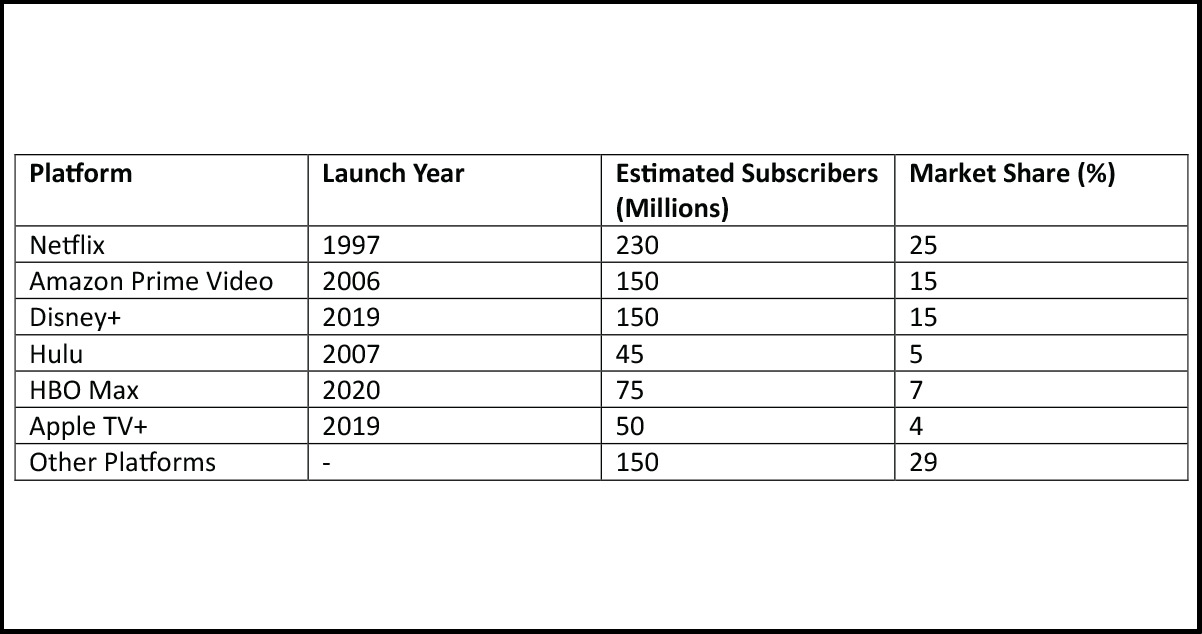
OTT platforms have proliferated globally, each competing for market share. The following table summarizes some of the leading platforms and their respective market shares as of 2024:
Importance of Data Scraping for OTT Platforms
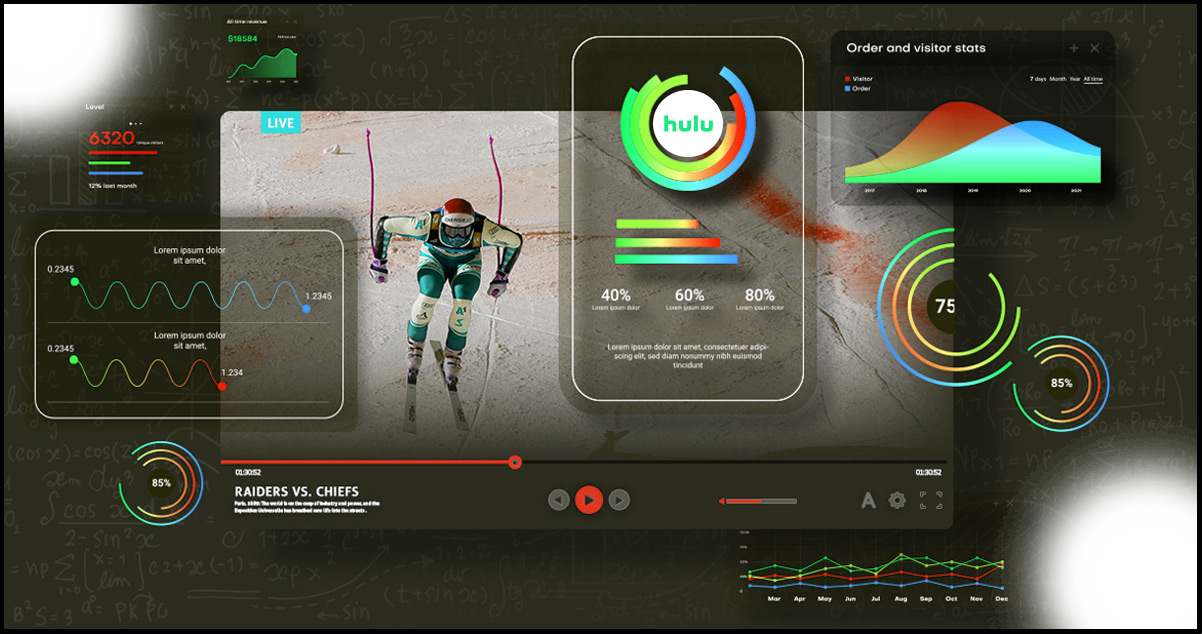
OTT Platforms Data Extraction offers valuable insights, enabling them to gather crucial information for decision-making and strategic planning.
- Enhancing User Experience: By analyzing user behavior, preferences, and viewing patterns, OTT platforms can tailor recommendations and content offerings. Web scraping OTT platforms data facilitates the collection of information on user ratings, reviews, and engagement metrics, allowing platforms to refine their algorithms for personalized experiences.
- Competitive Analysis: OTT platforms data scraping services enable monitoring of competitors' offerings, pricing models, and promotional strategies. Platforms can identify market trends and adapt their strategies by gathering data on popular content, user demographics, and engagement metrics.
- Content Performance Measurement: Extract OTT platform data to provide insights into how different types of content perform across various demographics. By analyzing viewing statistics and user feedback, OTT platforms can make informed decisions about content acquisitions, renewals, and original programming.
OTT Platforms Data Scraping Techniques
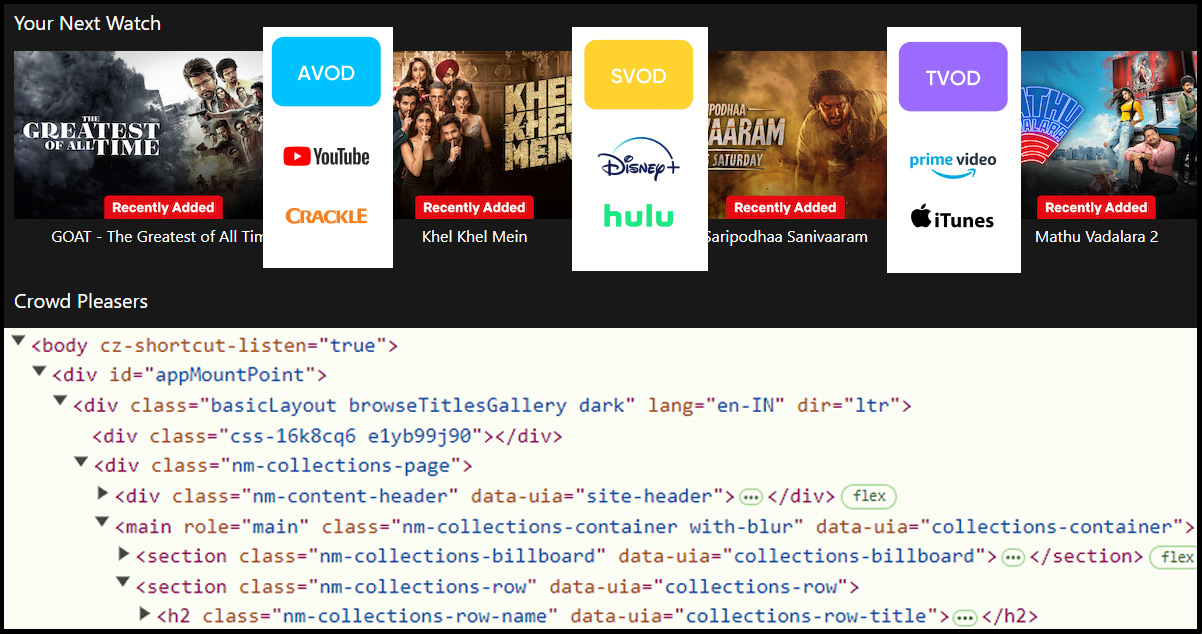
- Web Scraping: Web scraping is extracting data from websites using automated tools. This technique is essential for gathering information from platforms that do not provide APIs. For instance, scraping reviews and ratings from third-party sites can help platforms gauge audience reactions and preferences.
- API Scraping: OTT Platforms Data API allows developers to access data programmatically. API scraping is generally more efficient and reliable than web scraping, as it provides structured data. For example, Netflix's API allows access to its content catalog, enabling the extraction of metadata such as titles, genres, and user ratings.
- Screen Scraping: Screen scraping captures data displayed on the screen, which is particularly useful for extracting information from platforms that do not have accessible APIs. This method is often employed for gathering user interface data, such as user interaction metrics and visual elements of streaming content.
- Data Mining Techniques: Data mining involves analyzing large data sets to discover patterns and relationships. For OTT platforms, data mining can help identify trending genres, common viewing patterns, and audience preferences based on scraped data.
Tools and Technologies for Data Scraping
Overview of Scraping Tools
Numerous tools and technologies are available for data scraping, each with features, advantages, and suitable use cases. Selecting the right tool depends on the specific requirements of the scraping task, such as the complexity of the website, the volume of data to be collected, and the user's technical proficiency.
Detailed Analysis of Popular Tools
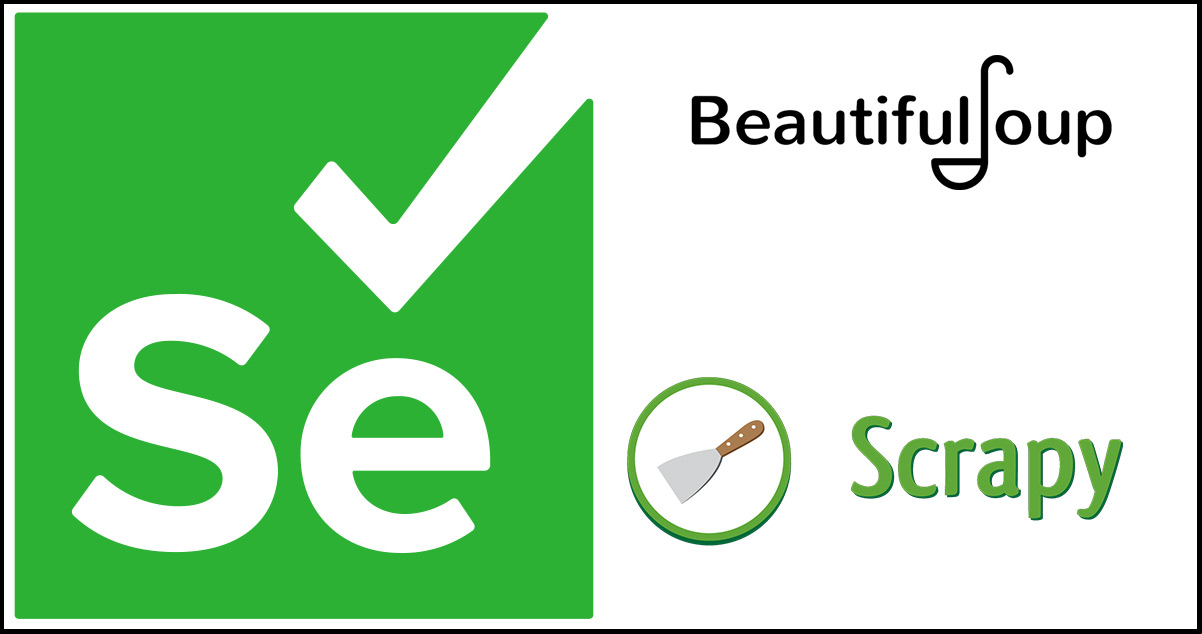
Scrapy Scrapy is an open-source web scraping framework written in Python. It is designed to extract data from websites and process it according to user requirements.
Key Features:
Asynchronous Processing: Supports concurrent requests faster than traditional scraping methods.
Built-in Support: Provides tools for handling requests, parsing responses, and storing data in various formats.
Example Use Case: Scraping metadata from an OTT platform's content catalog to analyze genre performance.
Beautiful Soup: Beautiful Soup is a Python library that makes it easy to scrape information from web pages by navigating and searching the parse tree.
Key Features:
User-Friendly: Simple API for navigating and searching HTML/XML documents.
Flexible Parsing: Supports various parsers, including lxml and html.parser.
Example Use Case: Extracting user reviews and ratings from an OTT platform's page to gauge audience feedback.
Selenium: Selenium is a tool primarily used to automate web applications for testing purposes. However, it is also effective for web scraping, particularly for JavaScript-generated dynamic content.
Key Features:
Browser Automation: Interacts with web pages just like a real user, allowing for scraping of dynamic content.
Multiple Language Support: Supports various programming languages, including Python, Java, and C#.
Example Use Case: Scraping live user interaction data from an OTT platform during a peak viewing period.
Challenges in Data Scraping
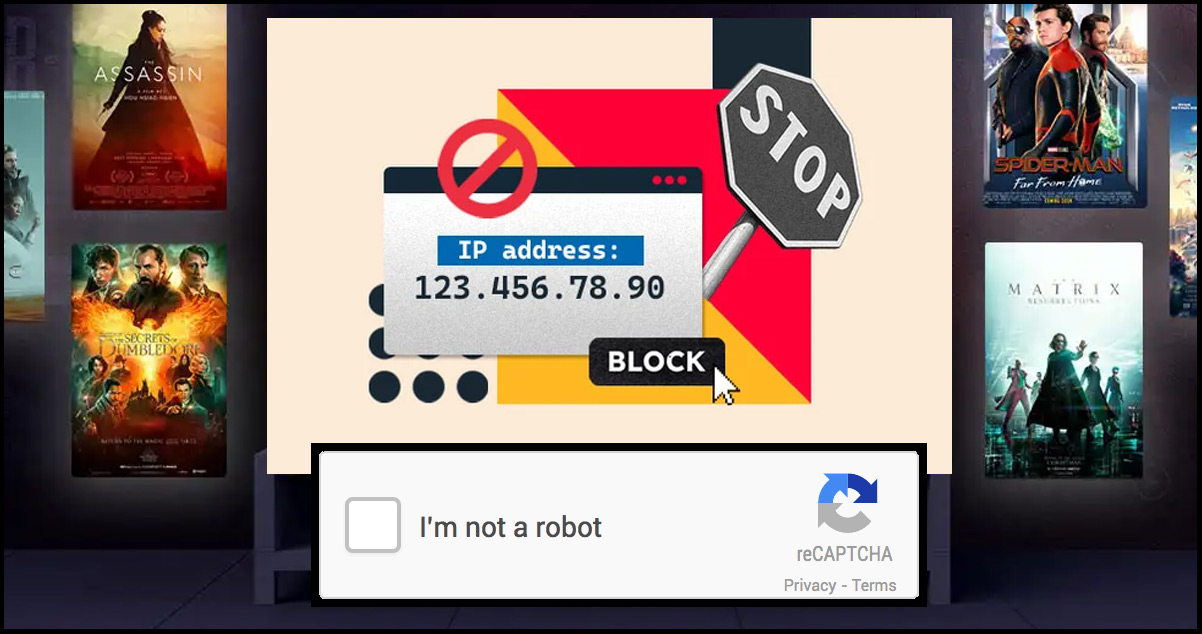
Legal and Ethical Considerations: Data scraping often raises legal and ethical questions. It's essential to respect the terms of service of the websites being scraped and to ensure compliance with data protection regulations, such as the EU's General Data Protection Regulation (GDPR). Legal repercussions may arise from unauthorized data access or misuse of scraped data.
Anti-Scraping Measures and Countermeasures: Many OTT platforms implement anti-scraping measures to protect their data. These measures include:
IP Blocking: Preventing requests from known data scrapers or suspicious IP addresses.
CAPTCHA Challenges: Requiring users to complete CAPTCHA tests to access specific data hinders automated scraping efforts.
Rate Limiting: Restricts the number of requests a user can make within a specified timeframe, which can slow down or halt scraping operations.
Countermeasures:
Proxy Usage: Rotating IP addresses through a pool of proxies to avoid detection and blocking.
User-Agent Rotation: Changing the user agent string in HTTP requests to mimic different browsers and devices.
Technical Challenges: Scraping data from OTT platforms can be technically challenging due to:
Dynamic Content: Many modern websites use JavaScript to load content dynamically, requiring advanced techniques like headless browser automation to capture the data accurately.
Website Structure Changes: Frequent updates to the website layout can break scraping scripts, necessitating ongoing maintenance and adaptation of scraping tools.
Case Studies
Scraping IMDb Data
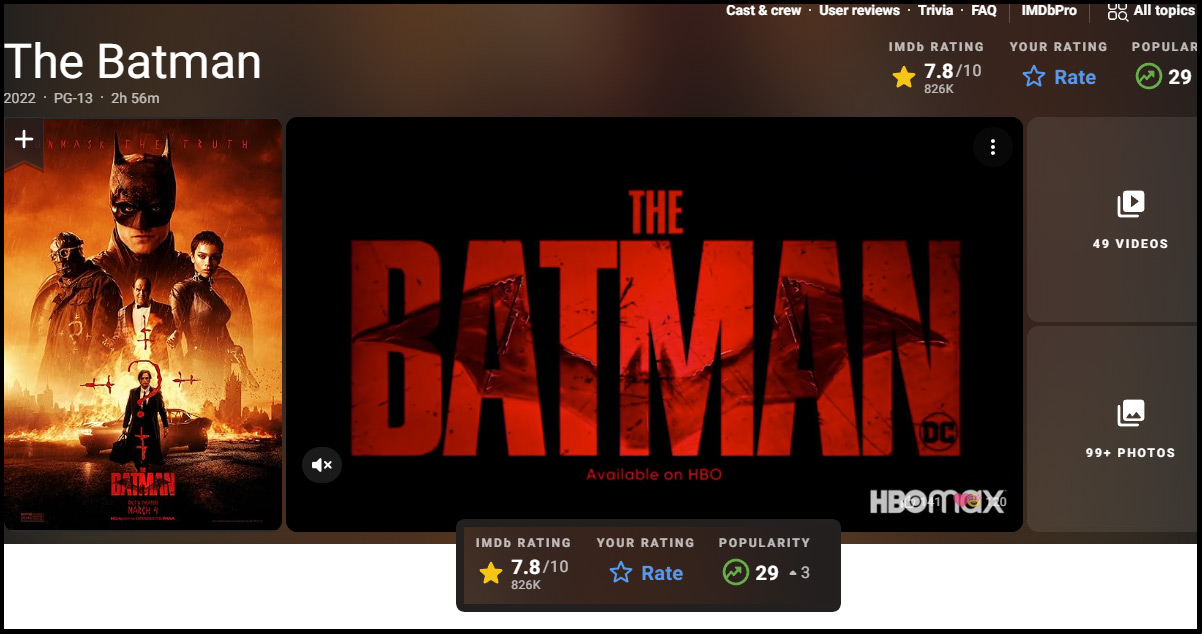
Data from IMDb will be gathered to analyze trends in film and television. OTT platforms can refine their content offerings by extracting data such as ratings, genres, and viewer demographics.
Extracting Data from Netflix
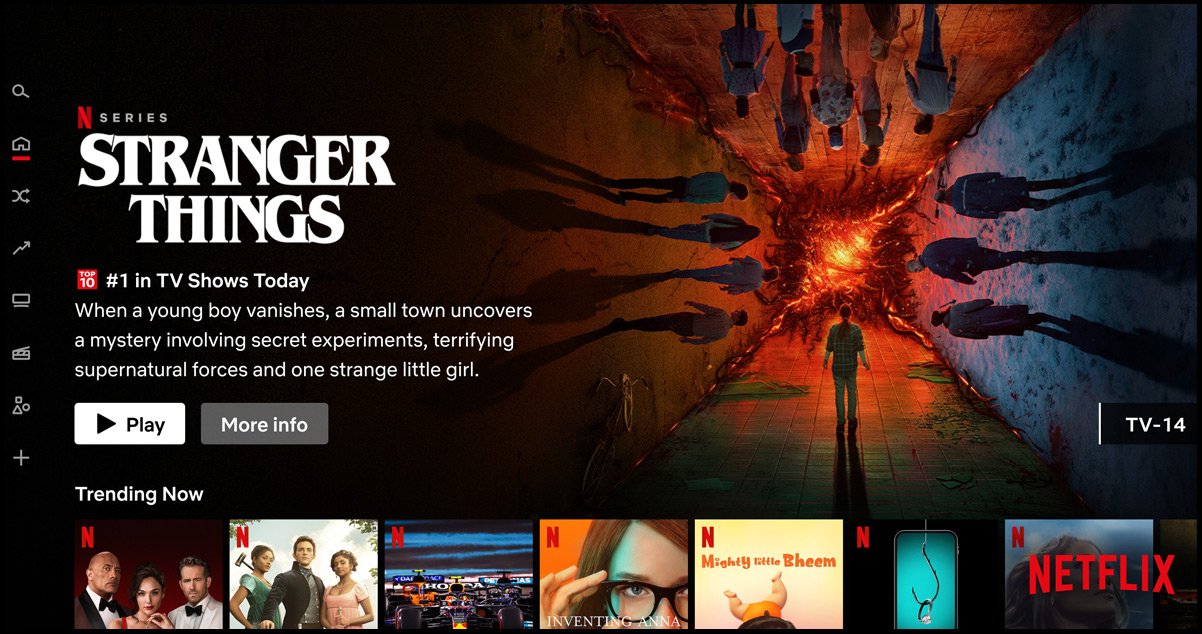
Netflix's vast library makes it an attractive target for data scraping. Businesses can assess content performance and viewer engagement metrics by scraping metadata and user interaction data.
Gathering User Reviews from Rotten Tomatoes
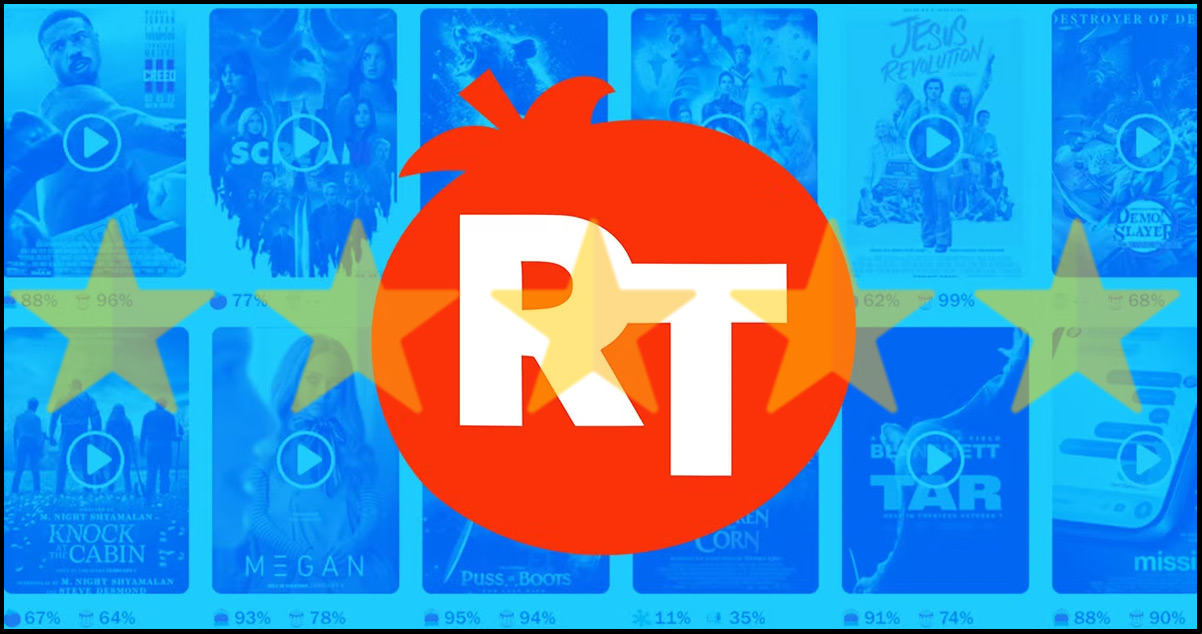
Rotten Tomatoes aggregates reviews and ratings for films and shows. Scraping this data allows OTT platforms to understand audience sentiments and adapt their marketing strategies accordingly.
Best Practices for Data Scraping
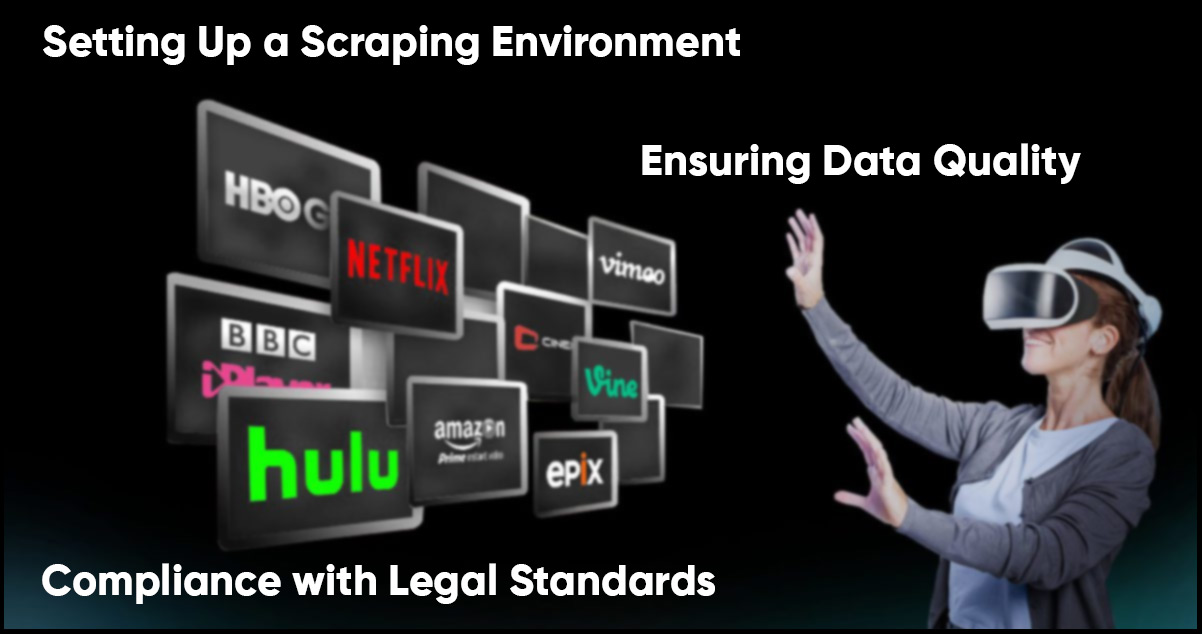
Setting Up a Scraping Environment
Virtual Environments: Use virtual environments to manage dependencies and packages effectively.
Version Control: Implement version control systems (e.g., Git) for better collaboration and management of scraping scripts.
Ensuring Data Quality
Data Validation: Implement validation checks to ensure the accuracy and consistency of scraped data.
Regular Updates: Regularly update scraping scripts to adapt to changes in website structures.
Compliance with Legal Standards
Respect Robots.txt: Check the robots.txt file of websites to understand which parts of the site can be scraped legally.
Data Anonymization: If collecting user data, ensure that personally identifiable information (PII) is anonymized to comply with privacy regulations.
Future Trends in Data Scraping for OTT Platforms
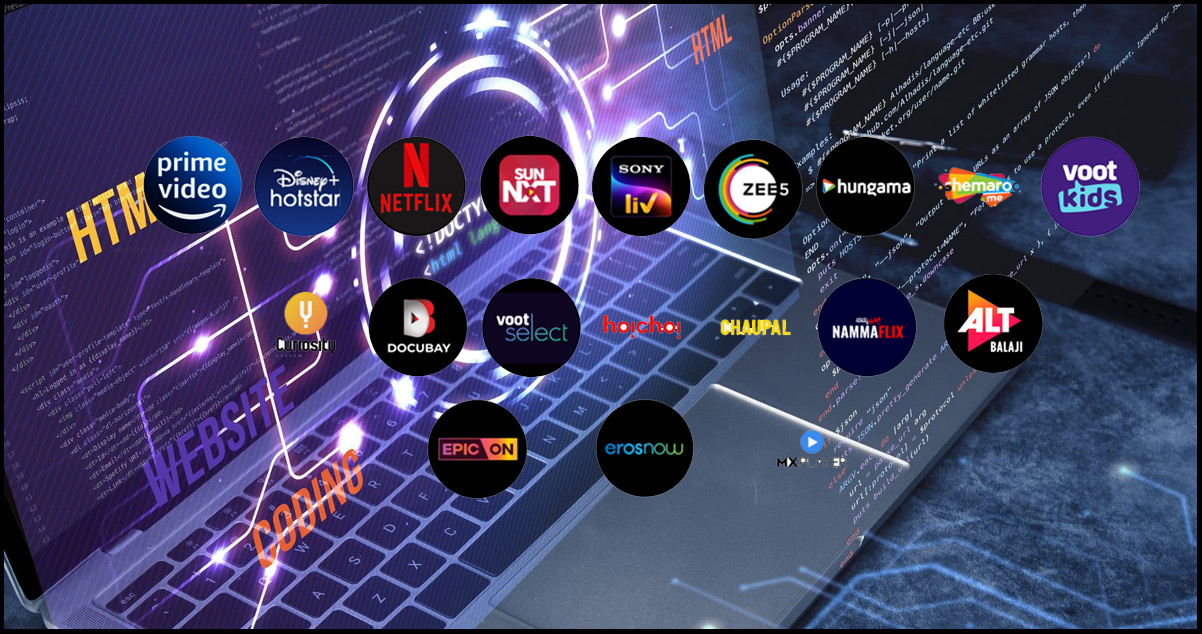
As the OTT landscape evolves, data scraping techniques must adapt to emerging technologies and trends. Key trends to watch include:
AI-Powered Scraping: Leveraging artificial intelligence to enhance scraping efficiency and accuracy.
Increased Focus on Privacy: Navigating stricter data protection regulations while scraping data.
Real-Time Data Analysis: Implementing real-time data scraping and analysis to respond quickly to changing market dynamics.
Current Utilization of Data Scraping by OTT Platforms
Data scraping has significantly increased among OTT platforms in recent years as businesses recognize its value for enhancing their strategies and operations. Recent studies indicate that approximately 70% of OTT platforms engage in data scraping to gather insights that inform content strategies, marketing decisions, and user engagement efforts.
Key Findings:
Content Optimization: About 65% of OTT providers utilize data scraping to analyze viewer preferences and trends, allowing them to tailor content offerings effectively. This includes determining which genres and titles resonate most with audiences.
Market Intelligence: Approximately 60% of platforms scrape data to monitor competitors' activities, such as pricing models, content releases, and marketing campaigns. This competitive intelligence enables them to stay ahead in a crowded marketplace.
User Engagement Tracking: Data scraping is used by 50% of OTT services to collect metrics on user engagement, including viewing times, episode completions, and interaction with content recommendations. This helps platforms refine algorithms for personalized user experiences.
Performance Analytics: 55% of platforms employ data scraping techniques to measure the performance of their original content, enabling data-driven decisions regarding renewals and marketing efforts.
This increasing reliance on data scraping illustrates its critical role in OTT platforms' strategic decision-making processes. It allows them to leverage insights from large datasets to optimize their offerings and enhance user satisfaction.
Here's a table that illustrates the year-wise percentage of OTT platforms utilizing data scraping for business purposes. This table is a hypothetical representation based on current trends and projections, providing a clear visual of how data scraping has grown in importance among OTT platforms over the years.
Year-wise Percentage of OTT Platforms Utilizing Data Scraping for Business (Hypothetical Data)
.jpg)
Key Observations:
Growth Trend: The percentage of OTT platforms utilizing data scraping has steadily increased from 30% in 2020 to a projected 80% by 2025.
Focus Areas: As data scraping has grown, the key focus areas have expanded from basic content optimization and user engagement tracking to more advanced analytics and AI- driven insights.
This table highlights the increasing reliance on data scraping as a critical component of business strategy among OTT platforms.
Conclusion: Data scraping has emerged as a vital tool for OTT platforms seeking to optimize their content offerings, enhance user experiences, and stay competitive in a rapidly changing market. Scrape OTT app data to help businesses gather valuable insights that drive informed decision- making and strategic planning. As the industry continues to grow, adapting to technological advancements and regulatory changes will be crucial for adequate data scraping in the future.
Embrace the potential of OTT Scrape to unlock these insights and stay ahead in the competitive world of streaming!
